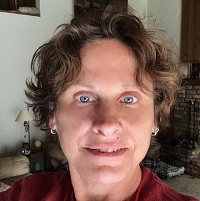Slay Your Home's Energy Vampires
Wasting money on energy vampires? You have the power to save money and energy in your own home with these 8 tools and tricks.

Jeff Bertolucci

The average household spends about $2,200 annually on energy bills. Although most of that expense is just the price of owning a home, it also includes the impact of a bunch of energy wasters, or energy "vampires," if you will. Fortunately, there are several tools and tricks that can help reduce your home's energy use and reduce your carbon footprint — that's good for you and the planet.
Simple things like leaving appliances plugged in or not changing the filter on your HVAC unit can cost you a fortune each year. The good news is that there are money-saving ways to cut down on your energy bills. From turning down your thermostat to insulating your windows, here are 8 simple tools and tricks to help you save money and kilowatts.
1. Turn down the thermostat
One of the easiest ways to save on your household energy bill is to simply turn down the thermostat. According to energy.gov, If you turn the temperature down for more than 8 hours at a time, you can save up to 1% on your energy bill per degree, without giving up a warm and cozy home. You might want to also invest in a smart thermostat to trim your utility bills while keeping your home comfortable.
From just $107.88 $24.99 for Kiplinger Personal Finance
Become a smarter, better informed investor. Subscribe from just $107.88 $24.99, plus get up to 4 Special Issues

Sign up for Kiplinger’s Free Newsletters
Profit and prosper with the best of expert advice on investing, taxes, retirement, personal finance and more - straight to your e-mail.
Profit and prosper with the best of expert advice - straight to your e-mail.
You can schedule your smart thermostat to tell you what temperature you want and when, control the temperature in a particular room, see exactly how much energy you’re using and automatically adjust the settings based on your habits, saving you money.
2. Insulate your windows
In an average home, windows can occupy about 15% to 20% of the surface area of the walls. During colder winters, heat can escape through gaps in your windows, especially if they are older or in bad shape. To ensure this doesn't happen, use a draft stopper, cover your windows with window insulation film, and add weather stripping or heavier, thicker window coverings designed to keep cold air from getting into your home through windows.
3. Switch off unnecessary appliances
A simple step to save household energy is to unplug cell phones and MP3 players once they're charged. Turn off the lights when you leave the room, and unplug appliances you're not using, especially when leaving for an extended vacation. You can also switch out regular light bulbs for LEDs, which are cheaper to run and will significantly reduce energy use.
4. Don’t overload your washing machine
You may think you're saving energy by piling as many clothes as you can get into your washing machine, but in reality it's working harder to wash a heavy load, and is using much more energy (and water) than necessary. Similarly, don't overload your dryer. You also won't have to repair or replace your washer and dryer as often — a win-win for your budget.
5. Change HVAC filters
Because the average person in the U.S. spends 90% of their time inside, indoor air quality can have a significant impact on your overall health, and your wallet. When an HVAC filter is clogged, it has to work harder for longer periods of time, which increases the energy your home uses. Cleaning the filters on your furnace and air conditioner will not only save you money, but also keep your family healthy. Besides, its a quick and painless process that can be done in less than an hour.
6. Insulate your attic
Poorly insulated walls and attics siphon heat and cold from our homes. Although there are many different types of insulation, make sure the R-value (a number that shows the effectiveness of the insulation) is right for the size of your attic. Colder climates should have insulation with a minimum R-value of 49. Houses in warmer climates should have an R-value of 30, according to the U.S. Department of Energy.
7. Shop for energy-saving appliances
Look for home appliances, such as microwaves and cordless phones, with low standby-power ratings. The Web site for the Federal Emergency Management Agency's Standby Power Data Center can tell you how much energy a device uses when it's idle. Just enter a product type, model number, or company or brand name, and the FEMA Center database will reveal which of the products meet the agency's standby-power requirements.
8. Don't leave electronics on standby
Leaving your electronic devices on standby can drain nearly 10% of your homes energy use, according to the Lawrence Berkeley National Laboratory. When electrical appliances, "energy vampires," are plugged into an outlet, they use energy even when turned off. To save money, unplug all large and small electrical appliances, such as your computer, cable box, coffee maker, microwave, printer, television and toaster.
If you're truly on a crusade to hunt down energy wasters and cut your energy bill, you'll need a measuring tool. Consider an inexpensive energy monitor such as P3 International's Kill A Watt EZ. Priced at about $31, this handy device plugs into a wall outlet. Connect an appliance to the Kill A Watt, and it will measure how many kilowatt-hours of energy are being used and estimate how much the appliance costs to operate.
Related Content
Profit and prosper with the best of Kiplinger's advice on investing, taxes, retirement, personal finance and much more. Delivered daily. Enter your email in the box and click Sign Me Up.

For the past 18+ years, Kathryn has highlighted the humanity in personal finance by shaping stories that identify the opportunities and obstacles in managing a person's finances. All the same, she’ll jump on other equally important topics if needed. Kathryn graduated with a degree in Journalism and lives in Duluth, Minnesota. She joined Kiplinger in 2023 as a contributor.
- Jeff BertolucciContributing Writer, Kiplinger's Personal Finance
-
 Dow Adds 292 Points as Goldman, Nvidia Soar: Stock Market Today
Dow Adds 292 Points as Goldman, Nvidia Soar: Stock Market TodayTaiwan Semiconductor's strong earnings sparked a rally in tech stocks on Thursday, while Goldman Sachs' earnings boosted financials.
-
 Why Public Markets Don't Look Like They Used To
Why Public Markets Don't Look Like They Used To -
 Turning 65 in 2026? Here Is Exactly How to Sign Up for Medicare
Turning 65 in 2026? Here Is Exactly How to Sign Up for MedicareWhether you’re months away from your 65th birthday or plan to work past retirement age, here are the steps to secure your Medicare coverage and avoid costly mistakes.
-
 I'm 61 and Want a Divorce, but I Worry About My Finances. Should We Live Separately but Stay Married?
I'm 61 and Want a Divorce, but I Worry About My Finances. Should We Live Separately but Stay Married?We asked Certified Divorce Financial Analysts for advice.
-
 6 Financially Savvy Power Moves for Women in 2026 (Prepare to Be in Charge!)
6 Financially Savvy Power Moves for Women in 2026 (Prepare to Be in Charge!)Don't let the day-to-day get in the way of long-term financial planning. Here's how to get organized — including a reminder to dream big about your future.
-
 Countries That Will Pay You to Move: Cash Grants, Incentives and What to Know
Countries That Will Pay You to Move: Cash Grants, Incentives and What to KnowExplore real relocation incentives — from cash grants and tax breaks to startup funding — that make moving abroad or to smaller towns more affordable and rewarding.
-
 Mortgage Protection Insurance: What It Covers and When It Makes Sense
Mortgage Protection Insurance: What It Covers and When It Makes SenseHow mortgage protection insurance works, what it costs, and when it’s actually useful in a financial plan.
-
 How to Use Your Health Savings Account in Retirement
How to Use Your Health Savings Account in RetirementStrategic saving and investing of HSA funds during your working years can unlock the full potential of these accounts to cover healthcare costs and more in retirement.
-
 I'm a Real Estate Expert: 2026 Marks a Seismic Shift in Tax Rules, and Investors Could Reap Millions in Rewards
I'm a Real Estate Expert: 2026 Marks a Seismic Shift in Tax Rules, and Investors Could Reap Millions in RewardsThree major tax strategies will align in 2026, creating unique opportunities for real estate investors to significantly grow their wealth. Here's how it works.
-
 Forget Job Interviews: Employers Will Find the Best Person for the Job in an Escape Room (This Former CEO Explains Why)
Forget Job Interviews: Employers Will Find the Best Person for the Job in an Escape Room (This Former CEO Explains Why)Escape rooms can give employers a better indication of job candidates' strengths than a standard interview. Here's how your company can get on board.
-
 8 Things You Need to Stop Wasting Money on in 2026
8 Things You Need to Stop Wasting Money on in 2026Want to get your finances in shape this year? Start by cutting out these sneaky sources of waste in your budget.